Auspicious Race Debut For Felt’s IA Disc
I well remember my tri bike's race debut, Ray Browning at Ironman New Zealand in 1989. He came off the bike 15 minutes in front and that crazy looking bike with an 80 degree seat angle didn't seem so crazy anymore.
In 1993 a rider aboard that design of mine broke the Kona bike course record with a 4:27. This Saturday past a woman rode 4:26 on that course, showcasing the power of women, and validating the design of another bike just introduced.
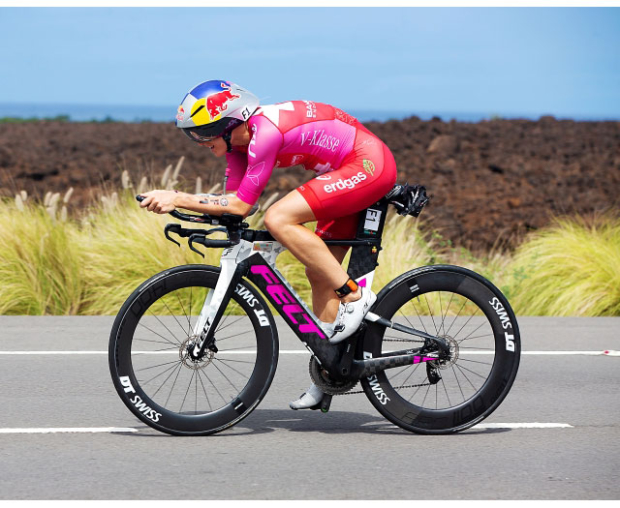
If this doesn’t stick a knife in anyone’s hope that disc brakes aren’t taking over tri bikes almost wholly, I don’t know what will. Let's talk a little about this new bike, which will come in several builds and is ready to be purchased now.
The flagship model is the FRD ($14,000) and that's what the athletes rode in Kona, but as opposed to a lot of bike debuts in recent years (the P5X and the Shiv Disc just introduced Ironman week), the IA Disc is offered in builds that are at least not stratospheric in price. The IA2 (Disc) with eTap sells for $7,500 and an Di2 blend in the IA 3 will sell for $5,800, and below you'll see images of these builds.
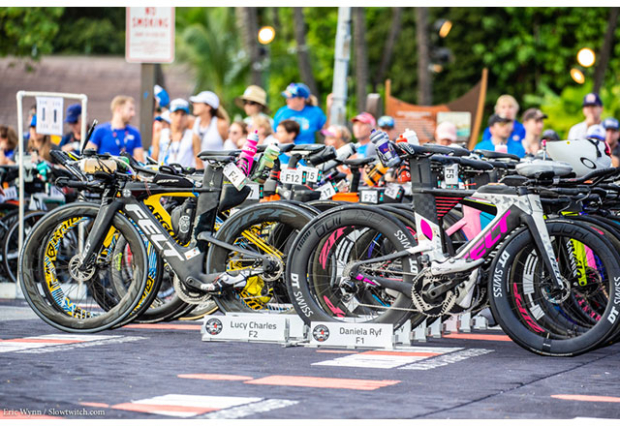
Yes, $5,800 is still a lot of money but that’s pretty good for a halo product. Remember Felt’s M.O.: We’re going to eventually see this tech in an IAx. We don’t see it yet, but give this 18 or 24 months and we’re likely to see a disc version of an IA 10, if past is prelude.
Felt’s athletes in Kona were given their choice of bikes and all elected to ride the IA Disc (Daniela Ryf, Josh Amberger, Mirinda Carfrae and Kaisa Sali are pictured here).
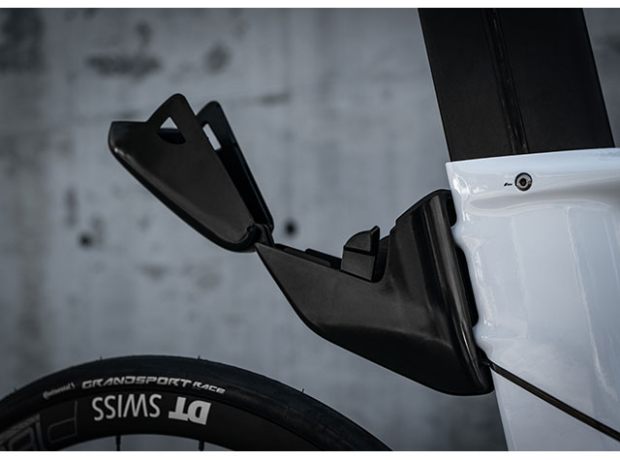
How fast is Ryf's record set aboard this bike? I can’t find evidence that Mark Allen ever rode faster than a 4:29 in Kona, in any of his victories. Nor any of the Big Four. And it wasn’t as if there weren’t good weather years back when they raced. Not only did Daniela break the course record on the bike (and the overall women's course record), I think she broke the bike course record by more than it’s been broken since the earliest years of triathlon.
What about this bike is new? What changed here, mostly, was the front of the bike. The fork changes and not simply to accept a disc. The fork of this bike (the IA, not the IAx) had a built-in set of rim brake calipers. The fork on the IA Disc exploits the fact that this caliper is missing.
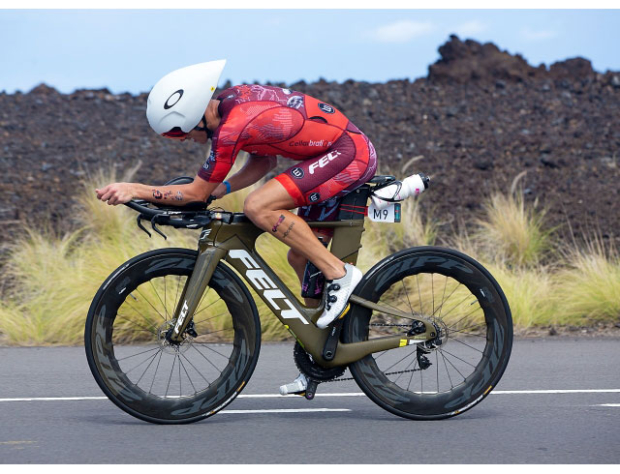
Common themes among the most recently released disc brake bikes are deep fork blades that do not try hug the wheel – in fact, better if they’re rather far from the sides of the wheel it seems, if you look at the body language of bikes like this one, and the new Shiv Disc. There’s a sound aero basis for this that goes back more than a quarter century and that I’ll write about elsewhere. Just, you can see this, along with something that acts as a splitter to clean up the rear of the bike as the air prepares to exit. That splitter is the hydration system on the new Shiv, and it’s the massively deep section seat tube that's always been on the IA.
You can see an all-in surface area theme on Josh Amberger’s bike (he's pictured riding in Kona above), riding his IA Disc and with a kamikaze, aero or die, very deep Zipp 858 on the front. (Rear 858? Sure. Front? Few make such a swashbuckling choice in Kona.)
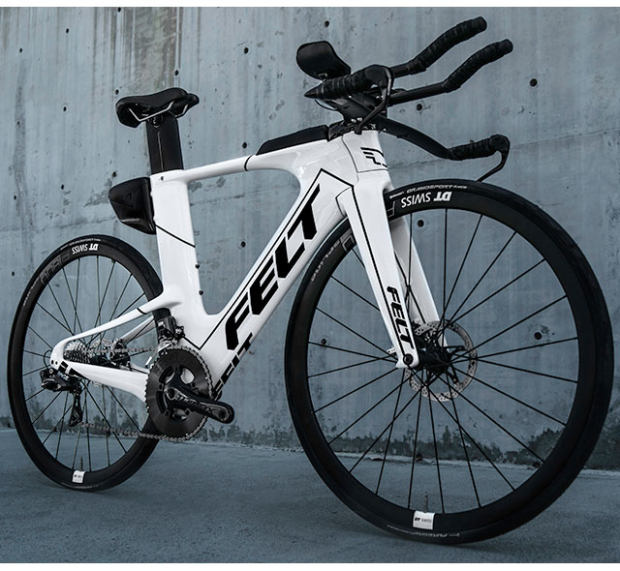
Tire clearance in the front and back is increased (28mm is possible on this bike). On the Shimano-equipped bikes 140mm rotors are used front and back. The thru axles are standard 12mm, and the rear is a standard 142mm in length. The front thru axle is only 100mm long and that’s a little on the short side. The thru axles are flush with the frame, so, they’re a little more aero and they stiffen the bike nicely.
They’re a little harder to change – a little slower – but honestly I feel pretty confident we’re moving toward tubeless in the medium term, and, tho I’m probably in the minority I suspect in 5 years we’ll all be riding tubeless, 28mm race tires in triathlons and I was in the minority too when I said 2 years ago that all new tri bikes introduced will have disc brakes. So there.
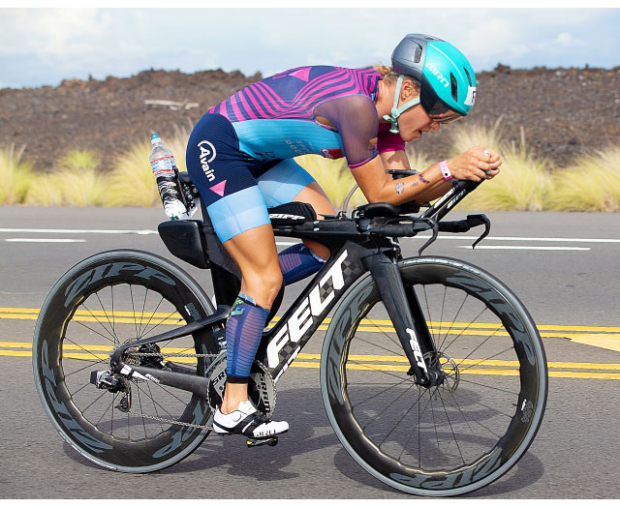
I bring this up because yes, having thru axles makes taking your wheel off slightly slower but as we move to tubeless you’ll rarely have to fiddle with flat tires. Sealant and a plug and you’re good. This is where we’re going. Your bike – if it’s this Felt IA Disc – anticipates your future.
Felt’s aerobars are of its own design. Its engineering team has a background in aerobars, and the bike is able to be pedestaled to 50mm with ease. The pads' cradles bolt onto the extensions which in turn are attached to the armrest brackets. This mimics the style of the Profile Design J2 brackets and I prefer Profile’s newer brackets, like the J4 and J5. But, the Felt aerobars work and this style of bar is highly adjustable fore/aft.
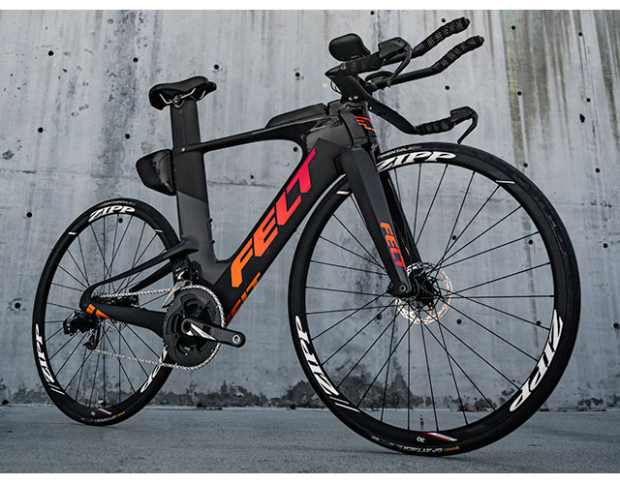
Combined with its liberal pad pedestaling this means the bike is very adjustable in all axes. Felt made an Excel-based tool for its tri bikes, where you plug in the X and Y (Stack and Reach, if you prefer) from the bottom bracket to your armrests (to armrest-center). This makes “prescribing” your IA Disc pretty handy, if you know your position and have confidence in it.
Whenever I test ride bikes (I rode a new disc brake tri bike in Kona) it’s easy to make sure the ride is fruitful because I use that company’s Pad X/Y prescriber to call out the exact size and configuration of the bike. So, for a Felt IA Disc, for me, it’s a size 56 frame, 35mm of pedestals, and the pads pushed forward 20mm from their neutral position.
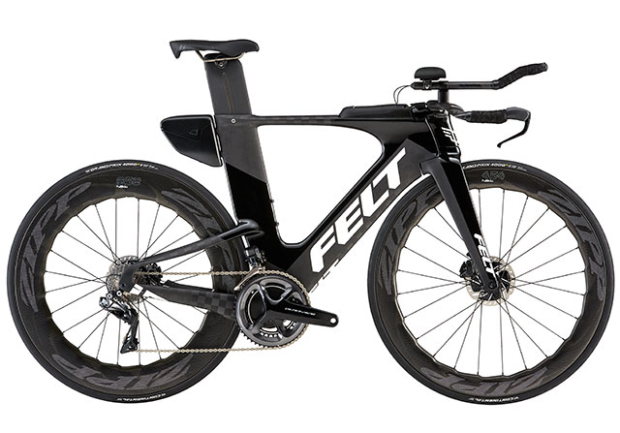
One thing about this bike though, which I probably shouldn’t say (but I’m going to anyway): this bike’s built-in stem is about 65mm long. That may seem short to you but short stems are fine in tri bikes. However, pushing the pads way far forward can be a bit much. Enter Rinnie.
If you look at pics of her (such as this one below) you’ll see she rides really far forward. Silly forward. Unlike just about all other athletes except for a very few. That standard stem just wasn’t long enough, so Felt made a special Rinnie stem that was almost 40mm longer. If you just find yourself in a bind, you might ask for that, if in fact that extra long stem is available on the new IA (I don't know if it is). You’d have to be well outside the norm to need it. I'll find out about the stem situation and report back.
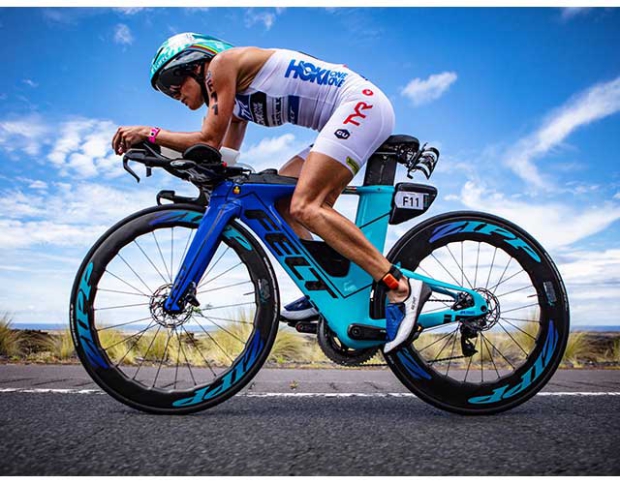
Felt made a nice jump in the Kona bike count this year, with almost 200 bikes in the race. I will make a case elsewhere on Slowtwitch that, while Felt was 4th in the count, it was 2nd in net increase year over year, with only Canyon having a better year.
Felt is one of those companies who achieves this not through pro sponsorships (I counted maybe 4 or 5 pros in the race, 4 of which were talked about here) but through organic sales of bikes.
The IA Disc is likely to continue Felt's leadership in tri bikes. Some companies just slap disc brakes on their bikes. Others, like Specialized and Felt, have given the move to disc brakes considerable thought, leveraging the advantages disc brakes offer.
Read more about the IA Disc.


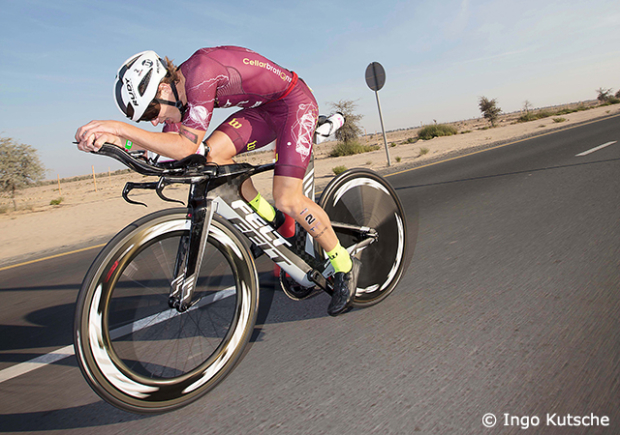
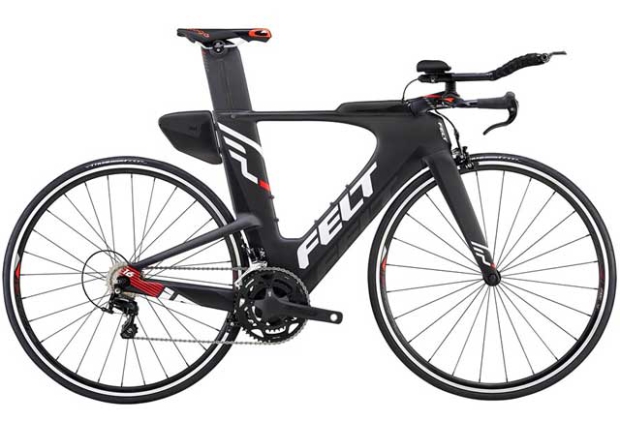
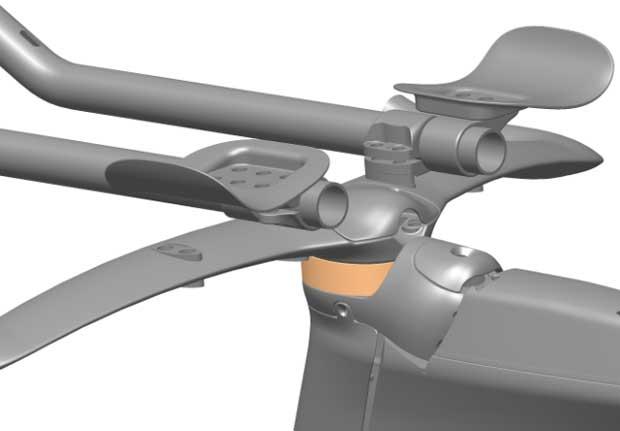
Start the discussion at slowtwitch.northend.network